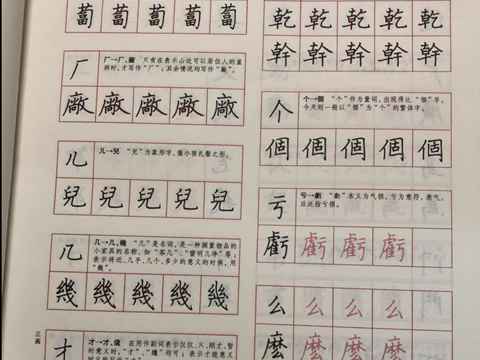Copy link succeeded! Now can share to friends.
Before deciding to learn Chinese, many Chinese learners will be puzzled by the following questions: How can I learn Chinese from scratch? What kind of teaching materials should be selected? How long does it take me to learn Chinese? These are the main questions of beginners. As they move forward, these questions transform into “Should I study simplified Chinese or traditional Chinese.” Today, I want to talk about traditional Chinese and simplified Chinese, which is better?

Chinese characters in China are hieroglyphs developed from pictures. Different people have different descriptions of the same thing. The fine and rough description of the images produces simplified and traditional characters. In oracle bone inscriptions, some characters have been written in both rough and fine forms. As time moves forward, These have gradually evolved into simplified Chinese characters and traditional Chinese characters that we see now. Therefore, simplified Chinese characters and traditional characters are in the same line.
Moreover, simplified Chinese characters and traditional characters should be said to be relative. When a Chinese character has more than two forms, the body with more strokes is called the traditional character of the character, and the simplified character with fewer strokes is the simplified character of the character.
From oracle bone inscriptions to the regular script, the general trend is from complexity to simplicity. Lishu is the simplification of seal script, while the cursive script and running script are the simplifications of Lishu. The simplified characters we use now are the simplification of regular script, and many simplified characters are derived from the regular script of cursive script.
In May 1964, the Chinese culture and Reform Commission published a list of simplified characters, which was divided into three subtables: the first table contained 352 simplified characters that were not used as radicals. The second table contains 132 simplified characters and 14 simplified radicals. The third table is the 1954 simplified words formed by the analogy of the radicals. There are 2236 tables of the actual script. These commonly used characters are simplified characters used in mainland China today. The average strokes of these simplified characters have been reduced from 16 to 19 strokes of traditional Chinese characters to 8 to 11 strokes.
The simplification of Chinese characters also adopts the following six methods: one is to replace the radicals. The second is to delete the part. The third is homonym substitution, such as “only” instead of “only” and “Hou” instead of “Hou.” The fourth is complete transformation; The fifth is to simplify analogy; The sixth is the regular script of cursive script, such as “Le”, “Wei” and “Shu”, which were originally cursive characters. Through this, it is undisputed that the Traditional Chinese characters are the original version of the simplified Chinese characters we use now.
Simplified characters and traditional characters have a long history. Generally speaking, the history of simplified characters is as long as that of traditional characters. We can see this from the word “Zhong” and “Zhong”. However, at that time, the simplified fonts were not called simplified characters, but were called “vulgar characters.” They were not the “professional” way of writing.
People say that “traditional Chinese is the foundation, simplified Chinese is for use”. In fact, simplified Chinese characters and traditional Chinese characters play their respective functions on the stage of history. In ancient times, traditional Chinese characters were official characters, while simplified Chinese characters were mainly used in inscriptions and block-printed books. Now in reverse, simplified Chinese characters are orthographic characters, and traditional characters are mainly used in the mainstream language channels. They follow the following five aspects. first, cultural relics and historic sites. Second, the variant characters in surnames. Third, calligraphy, seal cutting, and other artworks. Fourth, inscriptions and calligraphic signboards. The fifth is what needs to be used in publishing, teaching, and research. Six special cases are approved by the relevant departments of the State Council.
However, traditional Chinese characters are mostly used on the Internet, mainly for network names. It can be seen that the contributions of simplified Chinese characters and traditional Chinese characters in history are indelible.
In conclusion, Chinese learners should learn traditional Chinese or simplified Chinese. In fact, there is no need to worry about this aspect. It is most important to insist on what they want to learn.
Your first 1-on-1 Chinese lesson offer